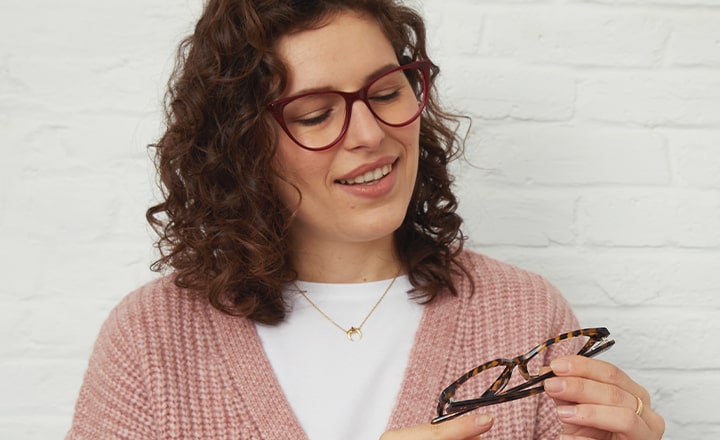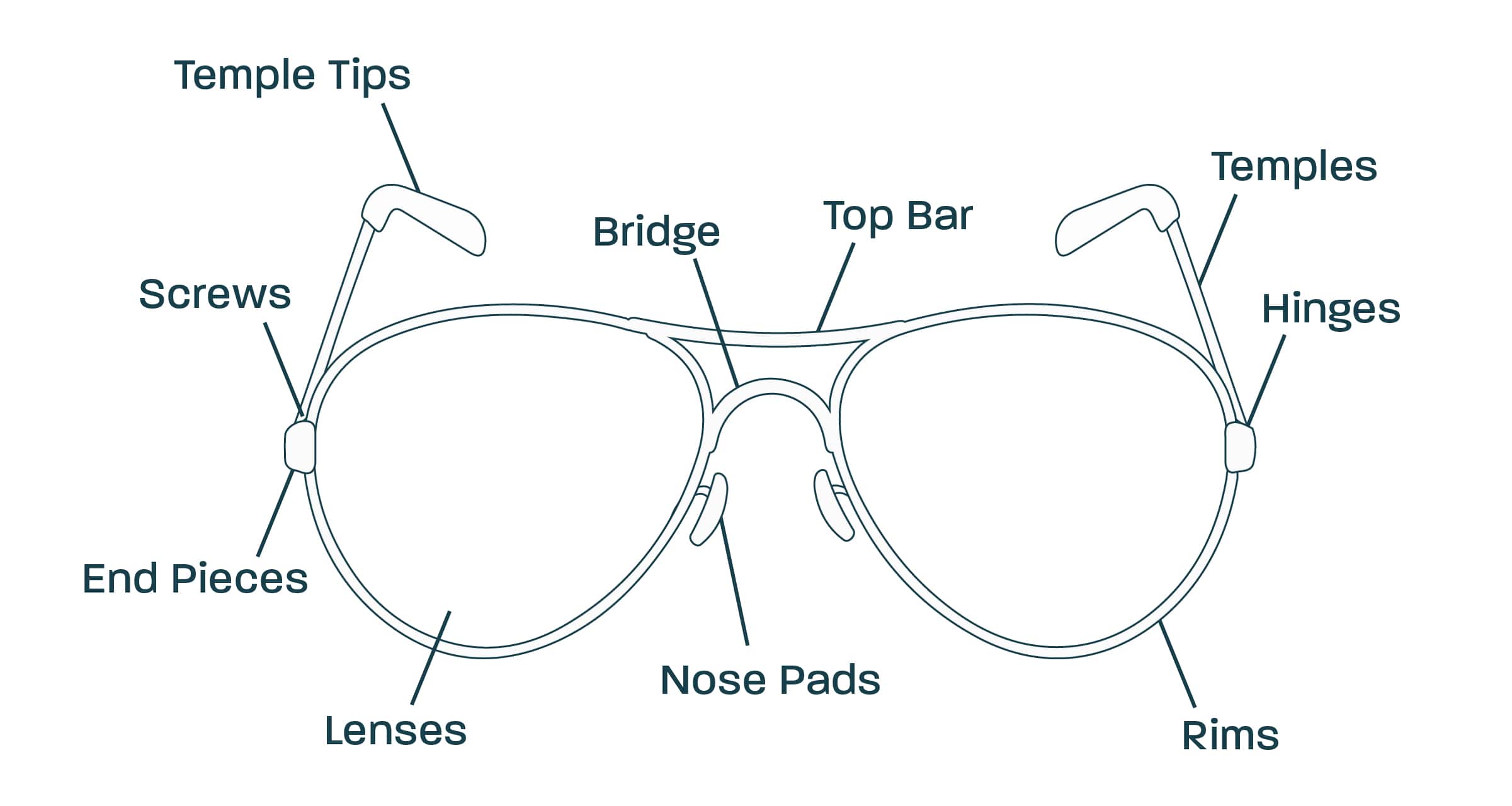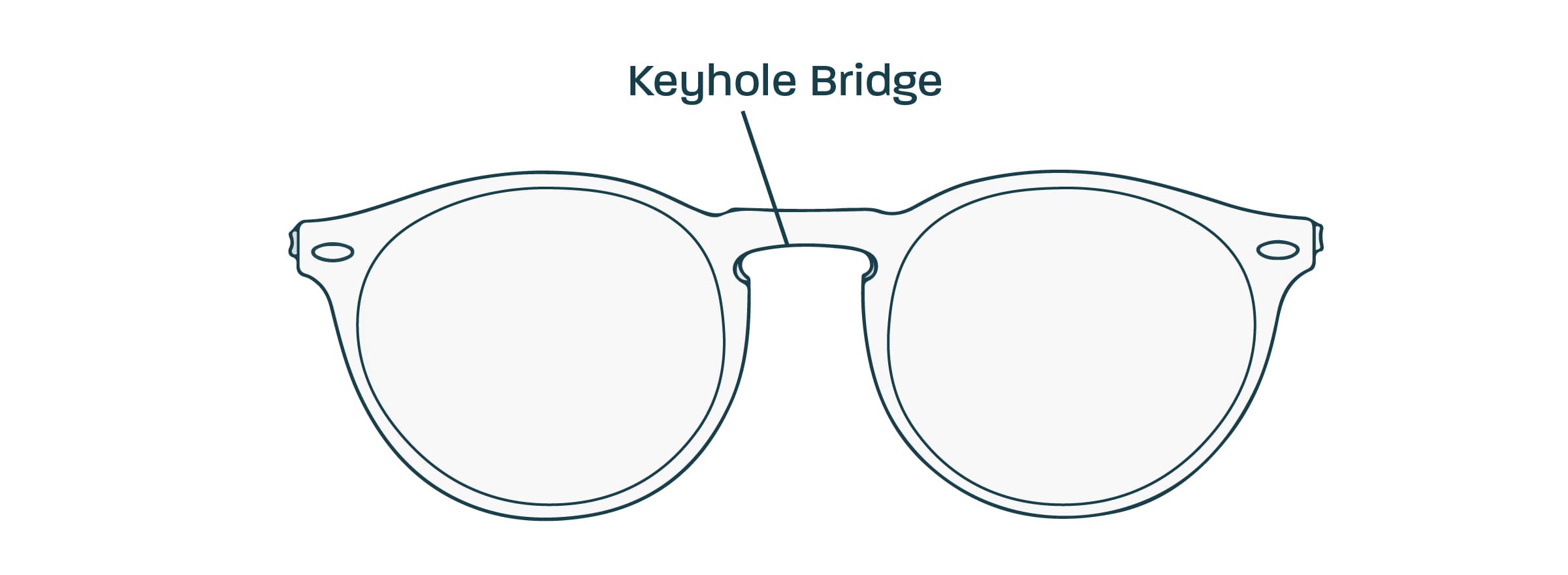Search based on the size of your current glasses
- Shop by shape
- Shop by colour
- Shop by size


It can be hard to get your head around all the jargon, especially when it comes to trying to understand all the parts that make up a pair of glasses. Opticians and retailers often use different language and it can be overwhelming to try and figure it all out. But don’t worry; we’re here to help. Whether you’re looking to invest in a new pair or you’re hoping to fix or adjust your current eyewear, it’s useful to know more about the different parts of glasses that form the final product. Glasses have a very intricate design that makes them practical and reliable for everyday use.
From key design elements that promise comfort and security to those that ensure the strength and longevity of the frame, glasses are made up of several essential parts.


The frame is the main structure of the glasses surrounding the lenses. Frames are normally constructed from a variety of materials like acetate, wood, stainless steel, titanium and eco-friendly resources. You may also have noticed that some of our transparent acetate frames appear to have metal built inside the temples. We call this a wire core which strengthens the acetate and maintains it. Our frames come in a selection of shapes and are made up of several key components.
Often a feature of metal glasses, soft silicone nose pads can be adjusted for a more bespoke fit. There is also another type of flexible nose pad that is sculpted and normally forms part of the front of a plastic or acetate frame designed for sports. Frames with a keyhole or saddle bridge can sometimes slip down your face when you’re active and moving around a lot, whereas these types of flexible nose pads can curve to the shape of your nose for the right amount of grip. This means they stay securely in place and remain aligned with your eyes.
The temples, also called the arms, are the long parts at the sides of your glasses that connect to the hinges and sit on your ears. They are designed to keep your glasses in place throughout the day. There are a variety of different designs, including completely straight temples, those with slightly curved ends and most commonly, temples with an end shaped like a hockey stick so that they can bend securely around your ears. Persol glasses have a flexible stem system called Meflecto, easily identifiable by the two metallic lines on the temples. This distinctive design feature means the temples are able to bend to fit the unique shape of your face without impacting the shape or quality of the frame over time.
The temple tips are situated at the end of each temple. They are often added to metal glasses and are made of a material that prevents the glasses from rubbing at the back of your ears.
The end pieces are located at the furthest corners of the rims and attach the lenses to the temples. They are sometimes embellished with eye-catching decorative design details. Not all frames have this particular feature but those that do have a stand-out look.
The rims are located at the front of the frame and secure the lenses in place. Glasses can either be full-rimmed, semi-rimless, or rimless. Glasses with rims can be a variety of shapes and thicknesses.
Some pairs of glasses feature a top bar, also referred to as a brow bar. It sits above the bridge and connects the rims. This is why it is also sometimes called a double bridge. More often than not, it’s simply a trendy design detail but it can also help to support the structure of the frame, making it more durable. It is a common feature of Aviator glasses and sunglasses.
The hinge is made up of two parts which are joined together by screws. You can easily tighten, loosen, or replace the screws using a glasses repair kit. They are normally fairly easy to get hold of and come with a small screwdriver and screws for your glasses.
Hinges are the metal joints of your glasses that link the end pieces, or frame front, to the temples. They are normally held in place by screws and have a special mechanism that allows you to fold and move the temples conveniently. There are many different types of hinges. This includes flexible spring hinges which ensure your glasses sit comfortably on your face and are especially ideal for people with active lifestyles.
The bridge reinforces the frame and carries most of its weight. It sits across the bridge of your nose and connects the two rims or the lenses. There are different nose bridge shapes to be aware of.
The most common design on plastic frames is a saddle bridge. It is engineered to spread out the weight of your glasses rather than being concentrated in specific areas. A saddle bridge rests snugly on your face.
Lenses are an important part of your prescription glasses. At Glasses Direct, we have a range of sophisticated lens options and coatings, suitable for all different prescriptions, including bifocal and varifocal glasses. Multi-focal glasses allow you to see multiple distances with one pair of glasses. You also have the option of blue light lenses which use a special shield that filters blue-violet light. They minimise glare and improve visual comfort.


A keyhole bridge is shaped like the keyhole of an old door. Glasses with a keyhole bridge distribute their weight to the side of your nose rather than at the top. It is designed for wider noses but also makes an ideal choice for those wanting a little more leeway. The glasses also sit lower down on your face compared to other frames which can help centre your lens.
Sunglasses have a very similar structure to standard clear glasses. Sunglasses parts are very much the same, the only difference being that sunglasses have tinted lenses. You can choose from dark tints, gradient tints and polarised sunglasses.


Now that you know what to look out for in your new glasses, you’ll be fully equipped to find eyewear that not only suits you but fits you perfectly. If you’re trying to decide which special features are best, try our free Home Trial. Get a feel for the design and fit of four different frames. You’ll have seven days to try them on with various outfits and see what your friends think! Once you’ve sent your Home Trial back with the free postage provided, you can head online and order your favourite pairs.